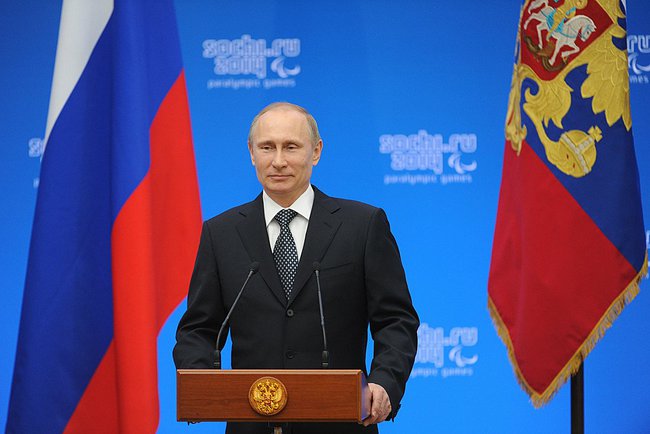Guest post by Deborah Jordan Brooks, Stephen G. Brooks, Brian Greenhill, and Mark L. Haas.
Numerous reports in China and the United States have noted with concern that fertility rates in these countries have fallen to record lows: recent data indicate that China’s current fertility rate is now at its lowest level since 1961, while that of the U.S. is at the lowest level ever recorded. Worries about societal aging are of course hardly limited to these two global powers: policymakers and analysts in Japan and much of Western Europe have long decried the negative domestic consequences associated with rapidly aging populations.
Although societal aging is associated with various domestic difficulties—most notably, reduced prospects for economic growth—we show in a recent article in International Security (ungated) that it has an unacknowledged international benefit. Simply put, aging is good for peace: states with the oldest populations are the most pacific. Specifically, the likelihood of interstate conflict drops sharply (to around one-quarter to one-third below the peak values) once countries reach: (1) a median age above 30 years, (2) a life expectancy above 75 years, and (3) a fertility level below two births per woman.
Why are old societies the most peaceful? For one thing, societal aging reduces the capacity for war. With older populations and low levels of fertility, the military pool shrinks and the per unit labor costs for soldiers increase. Moreover, old societies are likely to experience significant strain on their ability to secure funds for military spending. As the number of senior citizens in a country goes up, governments face growing pressure to increase spending on their welfare. And the more that governments spend on elderly care, the less money is available to spend on the military.
At the same time, old societies are also less likely to have an appetite for conflict. Individual-level data clearly indicates that the elderly are significantly less supportive of war than younger individuals. In turn, societies characterized by smaller family sizes are likely to be more averse to casualties—and thus to warfare—than societies with larger families.
Although we do not know the precise pace of global aging, we do know that in just a few decades the world’s population structure will be far older than it is today. Significantly, the world’s most powerful countries are not immune from this trend. To the contrary, China, France, Germany, Japan, Russia, the United Kingdom, and the United States are among the oldest states in the world, and all will continue to age as the century progresses. Aging in these states will likely create significant barriers to aggression.
Reinforcing this outcome is the fact that aging is likely to inhibit the emergence of a dangerous “power transition” (that is, when a rising power catches up to the existing leading power) between the United States and China. Although the United States faces major challenges from its aging population, it is relatively young compared to other economically advanced countries and is in dramatically better shape in this area than China, which now appears to be aging faster than any state in history. Significantly, America’s relative youthfulness is in large part due to its longstanding high levels of immigration; provided future immigration rates are not significantly curtailed, then population aging is poised to be a powerful force for the continuation of US relative power dominance vis-à-vis China.
Despite the pacifying effects of aging, the road to a “demographic peace” is likely to be bumpy in many parts of the world in the short and medium term. Marked disparities in age structures now exist across the globe: while around 40 percent of the world’s population lives in aging countries with significant numbers of elderly citizens, the majority of the world’s people live in developing countries that now have very large numbers of young people as a proportion of the adult population. A number of studies have examined how so-called “youth bulges” contribute to violence and conflict within states, revealing that having a high ratio of people aged 15-24 among the adult population increases the likelihood of domestic terrorism and civil war.
Yet youth bulges also alter the probability of military conflict between states. Countries with a large number of young people as a proportion of the adult population are more likely to engage in interstate conflict. Why? For young societies, a surplus of youth makes the recruitment and replacement of soldiers easier, which gives youth-bulge states a greater capacity to engage in all forms of hostilities. The motivation for conflict in youth-bulge societies also tend to be high because young adults are relatively more susceptible to radicalization and violent ideologies. The higher likelihood of civil conflicts in youthful societies may in turn promote international conflicts, as foreign countries may be inclined to intervene.
Unfortunately, given these realities, much of the developing world is likely to be more conflict-prone in the next few decades given their currently youthful profiles. And yet, the world’s more youthful states are themselves on the path to becoming much older, and many are doing so quickly. Combined with the fact that all of the great powers are aging, there is every reason to think that demographic change will act as a significant force for global stability over the long term.
Yet demography is not destiny. And it is important to recognize the probabilistic nature of such analyses—population aging does not provide an absolute barrier to conflict, it simply reduces the likelihood. Political leaders can try to disregard the incentives and pressures created by aging. These incentives, though, are extremely powerful—and they only intensify as the population becomes older.
Deborah Jordan Brooks is an Associate Professor in the Department of Government at Dartmouth College. Stephen G. Brooks is a Professor in the Department of Government at Dartmouth College. Brian D. Greenhill is an Associate Professor in the Department of Political Science at the University at Albany, State University of New York. Mark L. Haas is a Professor and Raymond J. Kelley Endowed Chair in International Relations in the Department of Political Science at Duquesne University.
*Note: Much thanks to MIT Press for providing ungated access to this publication through August 19th.







